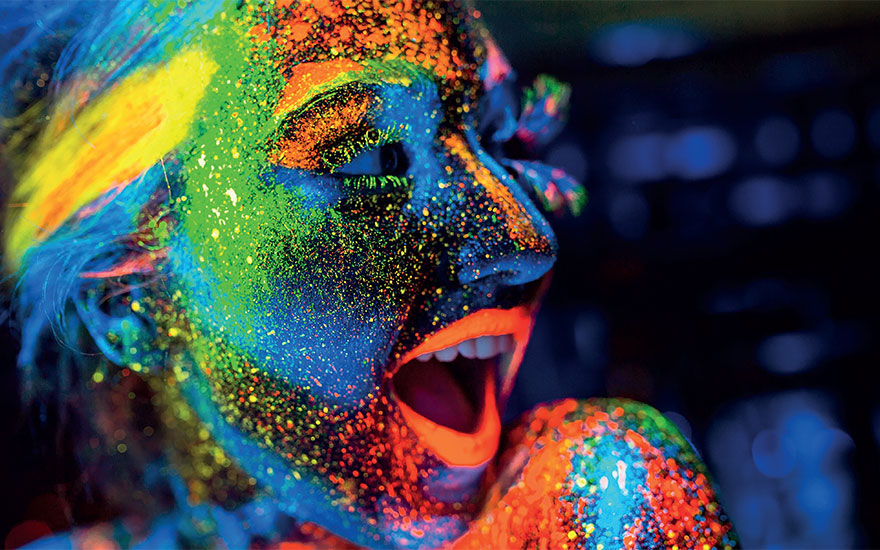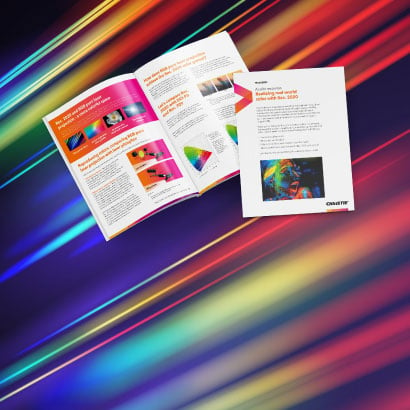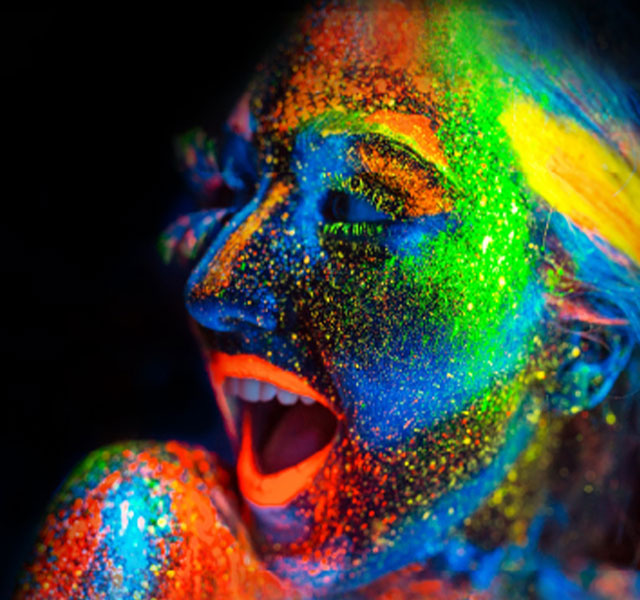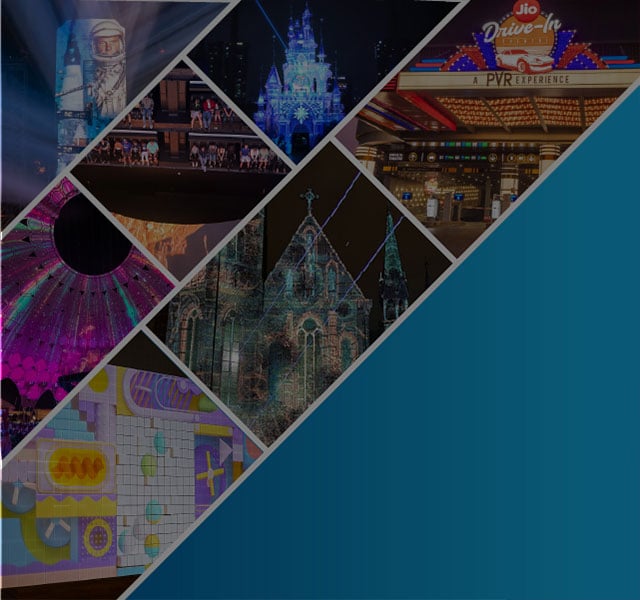Demystifying the Rec. 2020 color gamut and why it’s key to unlocking real-world colors
Memorable visual spectacles come from the brightest, most vibrantly displayed colors. Whether we’re talking about captivating cinema, thrilling theme park rides, or immersive museum exhibits, color is one of your most powerful storytelling tools. It influences the audience’s reaction and how they connect to what they see on-screen, helps to create an emotional response, and brings your scenes, objects, animations, and characters to life.
When you select projection technology for your next installation, understanding the science of color makes it easier to choose the projector that will create an impactful visual experience for your audience.
We’ll look at two color standards then dive into Rec. 2020, the color gamut closest to what our eyes can perceive. Let’s get started.
Rec. 709 and DCI-P3 color standards
The Rec. 709 color gamut is the most used standard today. It defines picture characteristics as having an aspect ratio of 16:9, 1080 active lines per picture, 1920 samples per line, and a square pixel aspect ratio. Rec. 709 was developed for camera encoding and signal characteristics of high-definition television (HDTV).
With a larger color gamut than Rec. 709, DCI-P3 is the standard for cinema. It has more greens and reds than the Rec. 709 color space, which enables cinema projectors to reproduce more realistic and lifelike colors on-screen.
What’s Rec. 2020?
In 2012, the International Telecommunications Union (ITU) published ITU-R Recommendation BT.2020 (Rec. 2020) for ultra-high-definition television (UHDTV). This recommendation covers various image parameters, including definitions for resolution, frame rates, bit depths, and color space.
The Rec. 2020 recommendation addresses an expanded color gamut. The development of this gamut helped capture real-world colors in a 3-primary system. The standards committee for Rec. 2020 chose color primary coordinates at the extreme edge of the visible color space.
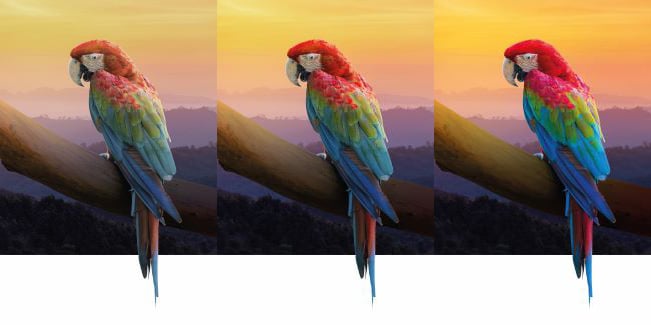
What's the difference between Rec.2020, Rec. 709, and DCI-P3?
With Rec. 2020, you get color that is much more vibrant than Rec. 709 and DCI-P3. While it doesn’t represent everything we see, Rec. 2020 has a far greater color volume (range of colors) and comes much closer to doing that than the other color standards.
The DCI-P3 color space does a better job of capturing real-world colors than Rec. 709. However, while it adequately covers yellow and green, several colors are still excluded, particularly around the cyan and darker blue areas on the CIE color space diagram. Essentially many of these missing colors are reproduced in the Rec.2020 color gamut.
As the only projection technology that can achieve approximately 98% of Rec. 2020, RGB pure laser blows open the color palette and gives you free rein to bring your vision to life. Rec. 2020 produces 75.8% of all the colors the human eye can see in comparison to DCI-P3’s 53.6% and Rec 709’s 35.9%. In other words, Rec. 2020 offers you more than twice the color of Rec. 709 and 41% more than DCI-P3.
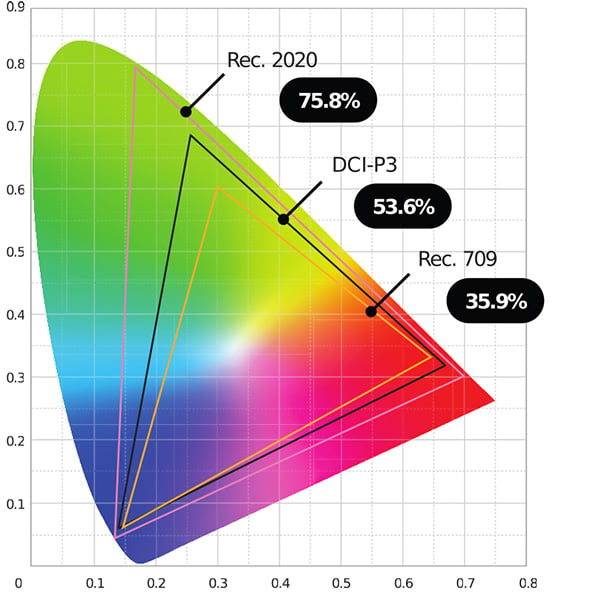
Immersive color for unforgettable experiences
The Rec. 2020 color space greatly impacts the quality of visual experiences. With its considerably wider color gamut, content is more vibrant, and it makes us perceive the content we see as brighter and with greater contrast.
More lifelike colors make the audience experience more immersive, helping creatives and filmmakers tell their stories and bring their visions to life. Having more colors also means it’s possible to reproduce exact brand or IP (intellectual property) character colors. So, you see superhero’s suits in precisely the right shades and with accurately displayed logo colors. In short, everything looks more realistic and feels more believable.
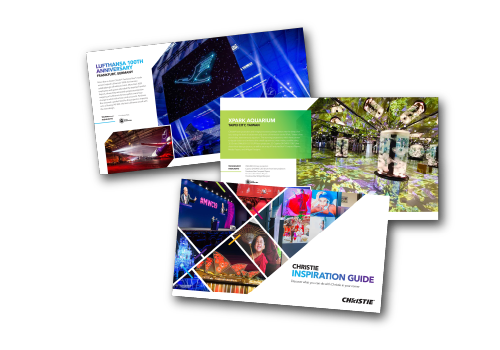
See some of the most impressive RGB pure laser projection installations from around the world.
Download our new Inspiration Guide
Rec. 2020 and RGB pure laser projection
RGB pure laser projection technology uses individual red, green, and blue laser diodes to create pure colors. RGB pure laser projection wavelengths, chosen to optimize the delivery of Rec. 2020 color primaries, achieve the full-color gamut for a more expansive color experience. This exceptional color reproduction, combined with game-changing brightness, makes RGB pure laser projection superior to laser phosphor projection. Even Rec. 709 and DCI-P3 content looks brighter and more vibrant through RGB pure laser projection!
RGB pure laser projection is the only projection technology that can support Rec. 2020 color, achieving approximately 98% of the color space.
The Rec. 2020 color space and RGB pure laser projection combine to offer the purest colors, an expansive color palette, incomparable detail and contrast, and the brightest images for the most impactful visual experiences possible.
Are you interested in learning more about Rec. 2020 and RGB pure laser projection? Download our tech brief (an email address is required): Realizing real-world color with Rec. 2020
